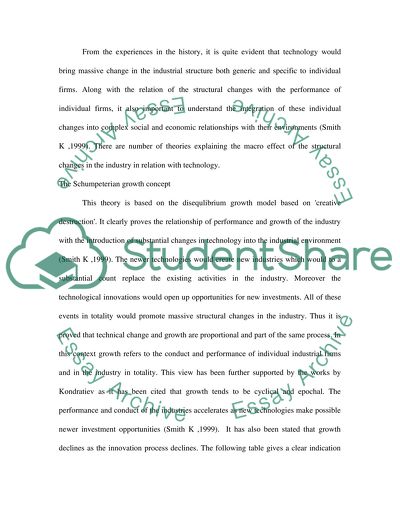Cite this document
(Reflection of Technological Changes on Market Performance Case Study Example | Topics and Well Written Essays - 1500 words, n.d.)
Reflection of Technological Changes on Market Performance Case Study Example | Topics and Well Written Essays - 1500 words. https://studentshare.org/technology/1551257-in-each-industry-technology-determines-industrial-structure-which-determines-the-conduct-of-firms-which-in-turn-determines-the-performance-of-firms-explain-and-critically-evaluate-this-statement
Reflection of Technological Changes on Market Performance Case Study Example | Topics and Well Written Essays - 1500 words. https://studentshare.org/technology/1551257-in-each-industry-technology-determines-industrial-structure-which-determines-the-conduct-of-firms-which-in-turn-determines-the-performance-of-firms-explain-and-critically-evaluate-this-statement
(Reflection of Technological Changes on Market Performance Case Study Example | Topics and Well Written Essays - 1500 Words)
Reflection of Technological Changes on Market Performance Case Study Example | Topics and Well Written Essays - 1500 Words. https://studentshare.org/technology/1551257-in-each-industry-technology-determines-industrial-structure-which-determines-the-conduct-of-firms-which-in-turn-determines-the-performance-of-firms-explain-and-critically-evaluate-this-statement.
Reflection of Technological Changes on Market Performance Case Study Example | Topics and Well Written Essays - 1500 Words. https://studentshare.org/technology/1551257-in-each-industry-technology-determines-industrial-structure-which-determines-the-conduct-of-firms-which-in-turn-determines-the-performance-of-firms-explain-and-critically-evaluate-this-statement.
“Reflection of Technological Changes on Market Performance Case Study Example | Topics and Well Written Essays - 1500 Words”. https://studentshare.org/technology/1551257-in-each-industry-technology-determines-industrial-structure-which-determines-the-conduct-of-firms-which-in-turn-determines-the-performance-of-firms-explain-and-critically-evaluate-this-statement.


